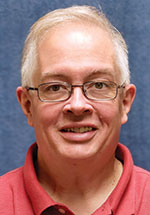Faith in History / Sean Gallagher
Column will focus on Church doctors and their relevance for us today
 On Nov. 1, Pope Leo XIV named St. John Henry Newman the newest doctor of the Church. The designation was made in response to requests following his canonization in 2019 made by groups of bishops around the world, including the U.S. Conference of Catholic Bishops.
On Nov. 1, Pope Leo XIV named St. John Henry Newman the newest doctor of the Church. The designation was made in response to requests following his canonization in 2019 made by groups of bishops around the world, including the U.S. Conference of Catholic Bishops.
Doctors of the Church are a select group of saints recognized for their significant contribution through their writings to the understanding of the faith and how it is lived out by the faithful around the world.
Newman became the 38th doctor of the Church and the first named by Pope Leo.
The category among the saints of doctors of the Church was created by Pope Gregory VIII in 1298 at a time when the process by which the Church declared people as saints began to become more formalized and directed by the papacy.
The title of “doctor” has long been a way to refer to a person who is a highly regarded teacher. Continuing today, teachers and professors who have earned doctorate degrees are still known as “doctors.”
Prior to 1298, prominent theologians in the early centuries of the Church were known in Church tradition in an informal way as “Church fathers.” Many such writers in the early Church have that title. But there are four saints from the western Church and four from the eastern Church who became known as the principal Church fathers.
The western ones are St. Ambrose, St. Augustine, St. Jerome and St. Gregory the Great. The eastern ones are St. Athanasius, St. Basil the Great, St. Gregory Nazianzen and St. John Chrysostom.
The first doctors of the Church, named in 1298, were the four principal western Church fathers. Although Pope Gregory VIII created this title and named four saints as doctors in 1298, there were no additional saints named as doctors until 1568 by Pope St. Pius V, who named St. Thomas Aquinas as a doctor of the Church that year.
In addition to St. Thomas having monumental influence as a theologian and spiritual writer, St. Pius may also have been moved to name him as a doctor of the Church because they were both members of the Order of Preachers, commonly known as the Dominicans.
In the following year, St. Pius named the four principal eastern fathers of the Church as Church doctors.
The number of the doctors of the Church really only started to increase at a regular pace starting in the 18th century. Twenty-seven of the 38 doctors of the Church have been named since 1720.
Most of the doctors of the Church are men. Four women have been named as doctors of the Church since 1970. St. Paul VI named St. Teresa of Avila and St. Catherine of Siena as Church doctors in 1970.
St. John Paul II named St. Thérèse of Lisieux a Church doctor in 1997 during the centenary of her death. Pope Benedict XVI named St. Hildegard of Bingen a Church doctor in 2012, the same year in which the 12th-century Benedictine abbess was also declared a saint.
This column is the start of a series of columns to explore the lives, writings and relevance of the Church doctors. The plan is for the series to proceed in a general chronological way according to the time in which each Church doctor lived.
That means that the next column will be about
St. Irenaeus of Lyons, who died as a martyr around the year 202. He is one of the most recently named Church doctors, given that title by Pope Francis in 2022.
(Sean Gallagher is a reporter and columnist for The Criterion.) †
 On Nov. 1, Pope Leo XIV named St. John Henry Newman the newest doctor of the Church. The designation was made in response to requests following his canonization in 2019 made by groups of bishops around the world, including the U.S. Conference of Catholic Bishops.
On Nov. 1, Pope Leo XIV named St. John Henry Newman the newest doctor of the Church. The designation was made in response to requests following his canonization in 2019 made by groups of bishops around the world, including the U.S. Conference of Catholic Bishops.